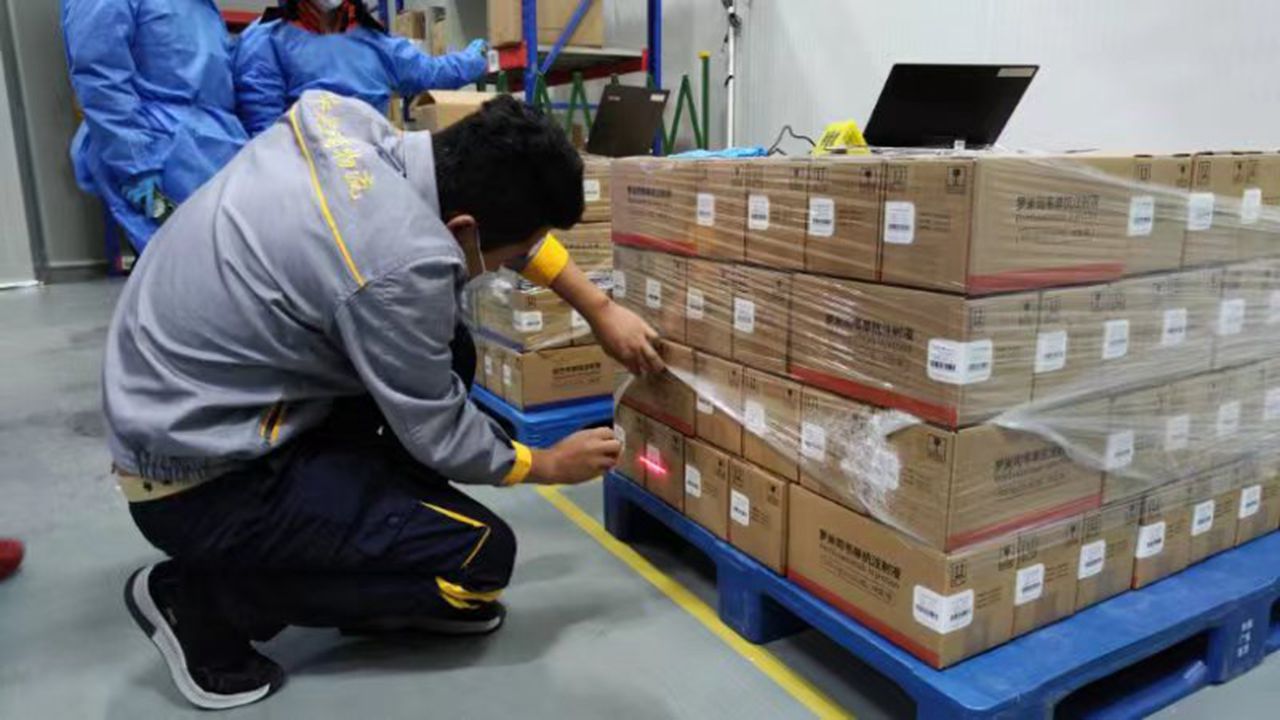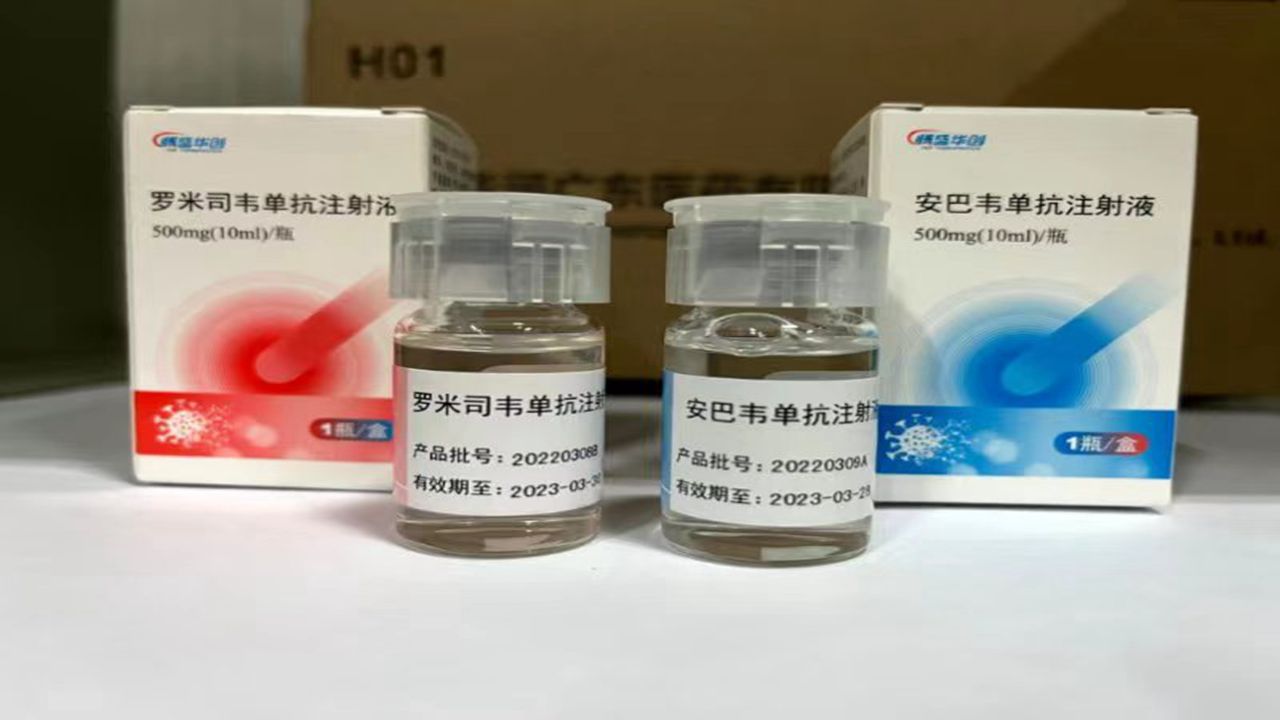China’s 1st batch of COVID drugs arrive in city

A staffer with China Resources Guangdong Pharmaceutical Co. Ltd. scans the drug traceability code of romlusevimab, one of the two monoclonal antibodies of the amubarvimab/romlusevimab combination therapy, in a logistics center Saturday. Inset: Romlusevimab (L) and amubarvimab.Courtesy of the Third People’s Hospital of Shenzhen

The first batch of drugs of China-developed neutralizing antibody combination therapy against COVID-19 have arrived in the Third People’s Hospital of Shenzhen, the hospital said yesterday after a drug handover ceremony.
The batch of medications, which serve 100, are stored at temperatures between 2 to 8 degrees Celsius, and a serving consists of 1,000 milligrams of amubarvimab and 1,000 milligrams of romlusevimab.
The amubarvimab/romlusevimab combination therapy was jointly developed by Tsinghua University, the Third People’s Hospital of Shenzhen and biotech firm Brii Biosciences. It was China’s first approved COVID-19 virus-neutralizing therapy with independent intellectual property rights.
The therapy was approved to commercially enter the domestic market last week. It costs between US$1,500 and US$2,000 per person in the U.S. and less than 10,000 yuan (US$1,494) in China.
Previous data from Phase III clinical trials worldwide showed that the cocktail therapy, relative to placebo, demonstrated a statistically significant 80% reduction of hospitalization and death in COVID patients.
The experimental testing data of live and chimeric viruses in several independent labs showed that the therapy maintained neutralizing activity against major COVID-19 variants of concern, including Alpha, Beta, Gamma, Epsilon, Delta, Delta Plus, Lambda, Mu, Omicron, and Omicron subvariants BA.1.1 and BA.2.
Lu Hongzhou, president of the Third People’s Hospital of Shenzhen, said that experiments related to the drug’s neutralizing activity against Omicron subvariants BA. 4/5 and BA.2.12.1, including live virus analysis, are in progress.
“It took only 27 months from the cocktail therapy’s R&D to marketing, which can be said to be a miracle,” said Liu Lei, the hospital’s Party chief.
Liu said that this kind of R&D, output and commercialization mode with the participation of a medical institution, scientific research institute and pharmaceutical company serves as an incentive for the hospital. Liu also expressed gratitude to Chinese respiratory expert Zhong Nanshan for actively promoting the drug’s Phase II clinical trials in the country.
According to Liu, an 82-year-old COVID patient in the hospital has become the first to use the drug after its commercialization and the patient’s viral load sharply dropped following medication.
Lu said the drug has a relatively wide range of clinical applications for patients and is also applicable to those with mild symptoms.
In December 2021, the drug was approved by the National Medical Products Administration.
In March this year, it was included in the country’s COVID-19 diagnosis and treatment guidelines as a recommended therapy to treat adults and adolescents aged 12 to 17 and weighing at least 40 kilograms with mild and normal COVID-19 type at high progression risk to severe disease, including hospitalization or death.